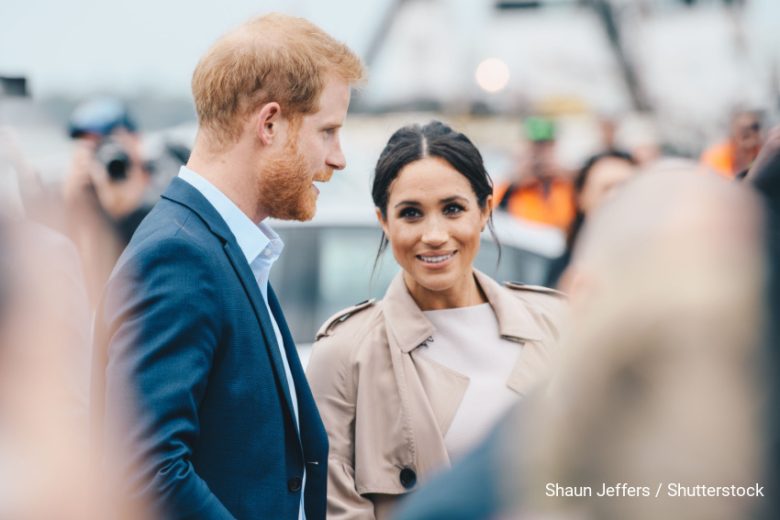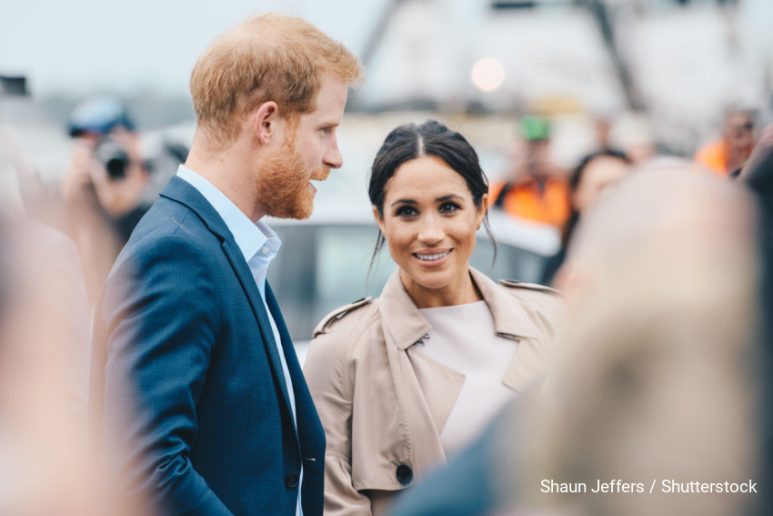By Angelo Boccato
The documentary series Harry and Meghan on Netflix has attracted the attention of conservative pundits and politicians in Britain, among the many. Such attention is not new when it comes to popular shows that focus on the British Royal Family. For example, the Crown has been criticised by former Prime Ministers like John Major, Tony Blair and several politicians, in addition to the aforementioned pundits. However, the award-winning series remains a show of fiction, inspired by real events, while the Sussexes’ documentary presents the Duke and Duchess’ side of the story in what turned out to be one of the lowest points in the recent history of the Royal Family.
The initial three episodes of the documentary series present the life stories of the royal couple, focusing on their childhood, their families, and crucially the role that British tabloids have in the exchange with the Royal family, in a sort of trade-off where coverage of the royals ensures enduring support within the British population towards the monarchy, while providing the public with idyllic narratives and stories.

The Tabloids’ influence in the British society and politics is well documented and researched. When it comes to the royal family maintaining their relationship with tabloids seems crucial , as it is highly beneficial and allows them to lead the narrative. This element can also be seen in the fact that tabloids would work to demolish unaligned members of the family, as can be seen by the hateful treatment of Meghan Markle in their pages. The most recent example is Jeremy Clarkson’s misogynistic and misogynoir Sun column. Clarkson’s column broke Ipso’s complaints record with 20,800 complaints as of 20 December which, according to The Guardian, are more than the number of complaints Ipso received in 2021 as a whole.
IPSO has received more than 20,000 complaints about Jeremy Clarkson’s column on the Duke and Duchess of Sussex.
Read more here: https://t.co/g0futEGbSf
— Independent Press Standards Organisation (IPSO) (@IpsoNews) December 20, 2022
Clarkson’s column mentioned that he would like to see Markle paraded naked in Britain while the crowd chanted ‘shame’ – a reference to an infamous scene from Game of Thrones. That specific comment led more than 60 MPs to ask the Sun’s editor to remove the article. In light of the backlash Clarkson asked The Sun to remove the column.
The Sussexes are considered to be unpopular by a large section of the British public and the British tabloids may have played a role in this due to the way they represent them.
From a certain point of view, the trade-off between the royals and tabloids was supposed to reach its peak at the wedding of Prince Harry and Meghan Markle, given its fairy tale elements and the prospect of modernising the royal family by introducing a mixed race member of the family, but the story turned out to be significantly different, something that can also be seen as intertwined with the growing toxicity of the public debate, as well as the actual rise of racist attacks in the United Kingdom which followed the outcome of the EU membership referendum in 2016.
The series features relatives, like Meghan Markle’s mother, Doria Ragland, and the Duchess’s niece, Ashleigh Hale, and friends, like Serena Williams; while the revelations may not come as shocking while adding more elements to the famous interview with Oprah Winfrey, the voices that turn to be more interesting are those of friend, photographer, and chair of the Southbank Centre, journalist, Misan Harriman, writer, broadcaster and journalist Afua Hirsch, historian and writer David Olusoga OBE and academic and author Kehinde Andrews.
As writer and broadcaster Nels Abbey pointed out in his telling op-ed titled “A white lens sees Harry and Meghan as villains-through a Black one, they have done Britain a favour” in The Guardian:
“Nevertheless, white mainstream Britain may not have known it, but Black people saw Meghan in some ways as a proxy for our own experiences. In the treatment she received, many saw a nation revealing its hand. And the new hand looked just like the old hand”.
The United Kingdom prides itself on being multicultural and one of the least racist countries in the world, in addition to the celebrated abolition of slavery in 1833, thirty-two years before the United States did the same.
The problems with these “medals” that the country has appointed on itself could be summarised with Dave’s passage in his hit Black “Least racist is still racist”. When it comes to slavery abolition, Hirsch points out just how much slavery was seen as distant, as it was practiced in the Caribbean (where more Africans were enslaved than in the whole United States) and, alongside Olusoga and Andrews, highlight just how much the wealth of Britain was built on the slave trade, with benefits for its ports, cities, universities, institutions and the overall support of the Crown.
Olusoga underlines the fact that the only element of slavery that was presented to him and his generation in British education was the Slavery Abolition Act. He also reminds the viewer, another element that is rarely discussed in the mainstream conversation on British history is that the ones who were “refunded” were not the former slaves, but the former slavers. A recent example of this can be seen in the case of wealthy Conservative MP Richard Drax, who is currently eyed by both Jamaica and Barbados for reparations, given his family’s wealth accumulated through slavery in both countries.
In the documentary Hirsch labels in fact, in the documentary, the Commonwealth as Empire 2.0, underlining how the intergenerational wealth of British elites comes from an intergenerational extraction of wealth from the former colonies, which has instead originated intergenerational poverty there.Commonwealth is a hollow word, as the wealth has been historically only directed towards Britain, but this brings out one of the central elements missing in the conversation, on just how much the continuation of the Commonwealth is functional to project an image of the British Empire continuing in different shapes, and not of a “club” of equals, as the common narrative tries to present.
This can also be seen in the fact that as Andrews explains, while the royal family has better PR than in the past, the living conditions of Black people in the Commonwealth have remained the same in terms of poverty from 50-100 years ago.Another aspect of this can be seen in the fact that the British monarch remains the head of state in several countries, but the shift of Barbados from a monarchy to a republic has inspired others to have their say, from Jamaica to Antigua and Barbuda.
Afua Hirsch’s criticism of the commonwealth, however, led tabloids such as the the Daily Mail to characterise it as an attack on the late Queen.The perspectives of Hirsch, Olusoga, and Andrews bring the black lenses to the discussion, They explain why this love story was so popular and political among Black Britons, whilepointing out the skeletons in the closet: the Empire, the Commonwealth, and the history of British slave trade and slavery in the Caribbean.
Olusoga also reminds the viewer that, when it comes to tabloids, and in general to the presence of Black journalists in Britain, this counts for 0.2% of the journalistic workforce, over a Black population that counts for 3.5% of the British population, an element where race and class are intertwined. This influences everything, from the unsympathetic, when not an outright hateful portrayal of Meghan Markle, to how systemic racism is brushed under the carpet by mainstream media, to the hateful portrayals of knife crime as “black on black crime” and more.
Diverse media narratives require diverse lenses.
Photo Credits: Shaun Jeffers / Shutterstock

